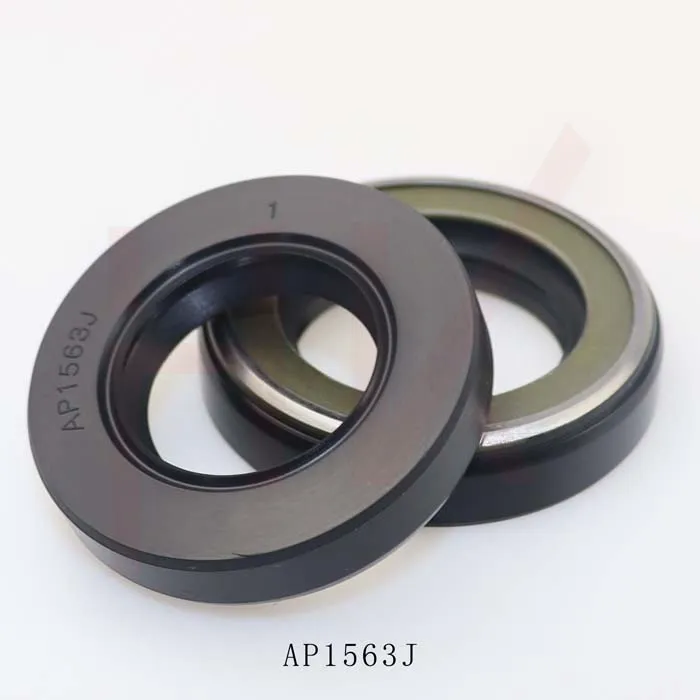ທ.ວ. . 18, 2024 00:00 Back to list
wiper ring
Understanding Wiper Rings A Crucial Component in Sealing Applications
Wiper rings, often overlooked yet essential components in various mechanical systems, play a pivotal role in ensuring the efficiency and longevity of hydraulic and pneumatic cylinders. These rings are designed to prevent dirt, dust, and other contaminants from entering the cylinder while also ensuring that the hydraulic fluid or lubricant remains contained within. This article delves into the function, materials, applications, and importance of wiper rings in various industries.
The Function of Wiper Rings
The primary function of a wiper ring is to act as a barrier. Positioned at the outer edge of a cylinder, wiper rings sweep away debris and contaminants that could damage the seals and hinder the performance of hydraulic or pneumatic systems. By maintaining a clean environment within the cylinder, wiper rings help ensure optimal operation, reduce wear and tear on other components, and prolong the lifespan of the machinery.
Moreover, these rings are designed with specific geometries and materials to handle different pressures and temperatures, making them suitable for a wide range of applications. It is crucial to select the right type of wiper ring for a particular application to ensure maximum efficacy.
Materials Used in Wiper Rings
Wiper rings are typically made from various elastomers and thermoplastics, chosen based on their durability and resistance to wear. Common materials include
1. Nitrile Rubber (NBR) Known for its excellent oil resistance, NBR is widely used in environments where petroleum-based fluids are present.
2. Polyurethane These rings offer exceptional abrasion resistance and tensile strength, making them ideal for high-wear applications.
3. PTFE (Polytetrafluoroethylene) This material is known for its low friction properties and chemical resistance, often used in aggressive chemical environments.
wiper ring

4. Viton A fluorocarbon-based rubber that provides excellent high-temperature capabilities and chemical resistance.
The choice of material directly impacts the performance of the wiper rings, which is critical in determining their application suitability
.Applications of Wiper Rings
Wiper rings find applications across various industries, including
- Manufacturing In hydraulic systems, wiper rings prevent contamination of fluids, ensuring smooth operation of machinery. - Automotive Used in the design of shock absorbers and hydraulic pumps, they help keep systems functioning optimally. - Aerospace In aircraft hydraulic systems, wiper rings are vital for maintaining system integrity under extreme conditions. - Construction Heavy machinery relies on wiper rings to ensure that hydraulic systems do not fail due to environmental contaminants.
The versatility of wiper rings allows them to be employed in almost any application involving fluid movement, emphasizing their significance in engineering design.
Importance of Regular Maintenance
To maximize the lifespan and effectiveness of wiper rings, regular maintenance and inspection are crucial. Over time, wiper rings can wear out due to environmental stresses or prolonged exposure to extreme temperatures and pressures. Regular checks can help identify signs of wear, allowing for timely replacement and preventing potential damage to more costly components of the system.
In conclusion, wiper rings are an indispensable part of hydraulic and pneumatic systems, serving to protect critical components from contamination and ensuring smooth operation. Their durability, combined with the right material selection, can significantly enhance the reliability of mechanical systems across various industries. Given their importance, investing in quality wiper rings and prioritizing maintenance is essential for any business that relies on hydraulic or pneumatic technology.
-
The Trans-formative Journey of Wheel Hub Oil Seals
NewsJun.06,2025
-
Graphene-Enhanced Oil Seals: Revolutionizing High-Pressure Oil Sealing
NewsJun.06,2025
-
Future of Hydraulic Sealing: Advanced Intelligent TCN Oil Seals
NewsJun.06,2025
-
Don’t Let a Broken TCV Oil Seal Ruin Your Day
NewsJun.06,2025
-
Bio-Inspired Dust Seals for Better Sealing Performance
NewsJun.06,2025
-
Biodegradable and Sustainable Hydraulic Seal Materials
NewsJun.06,2025
-
Top Oil Seal Solutions for Your Industrial Needs
NewsMay.22,2025
Products categories
















